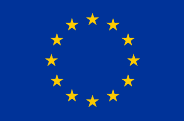
Safe non-food consumer Products in the EU and China
Testing is one of the activities in the conformity assessment process. Testing is the determination of technical characteristics of a product.
Testing can take place between the pre-market risk assessment and the compilation of the technical file. The pre-market risk assessment identifies the hazards that are relevant for the product, and it provides a list of tests that will be necessary to demonstrate whether each risk has been adequately reduced. The result of the test is a test report that will go into the technical file.
The purpose of the testing is to verify that the product meets or exceeds the safety benchmark for each of the parameters that have been identified in the pre-market risk assessment. Some of the EU product safety legislation requires that a third party is involved in (parts of) the conformity assessment process. You can read more in the factsheet on Using a third party.
Tests must be carried out correctly according to commonly agreed methods, and the results must meet or exceed commonly agreed values. The test methods are described in the standards together with the agreed threshold values. The product complying with the standards is presumed to be in conformity with the essential safety requirements set out in the applicable legislation if the standards are referenced in the Official Journal of the European Union (OJEU). Further information on, and the list of harmonised standards for several product categories are available on the European Commission’s website.
Note: The full text of European standards can only be purchased from a national standardisation body. The following site of CEN (the European standardisation organisation) provides links to the national standardisations’ bodies’ websites. In addition, the China Standards Information Services Network can be used to access European standards.
The results from the test must be documented in a detailed test report. The following information can be part of the test report (non-exhaustive list):
Manufacturers can choose to use a test laboratory for the following reasons:
Accreditation is an internationally recognised way of ensuring that laboratories and certification bodies are qualified to do their job. Laboratories are accredited by national accreditation bodies.
If a manufacturer wants to search for accredited bodies, there are a number of websites that can be checked:
You may also visit the SPEAC ACADEMY to learn more about the EU Safety requirements.
The provided information was updated in 2022. Please note that some of the provided information could change during possible subsequent revisions of legislation, standards, and guidance documents. For any updates of official information on the EU product safety rules, please follow the Link to the webpage of the European Commission.
This document was produced with the financial support of the European Union. Its contents are the sole responsibility of SPEAC project and do not necessarily reflect the views of the European Union.

This website was created and maintained with the financial support of the European Union. Its contents are the sole responsibility of SPEAC project and do not necessarily reflect the views of the European Union.